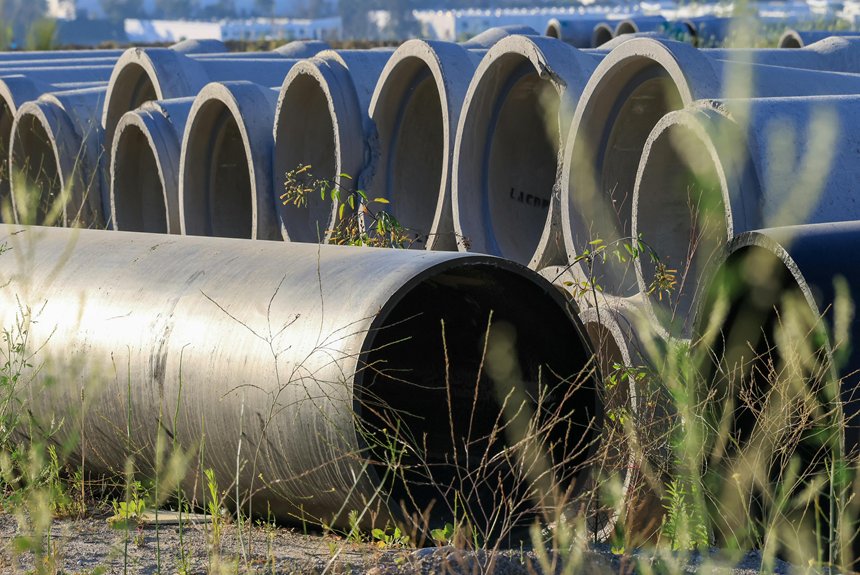Cement tubes are robust structures crafted from layered, recycled cardboard or concrete, primarily utilised in construction for foundations, supports, and decorative features. They are manufactured using techniques such as centrifugal, dry cast, or wet cast, which contribute to the creation of durable and precise shapes.
These tubes are highly regarded for their strength, resistance to corrosion, and commitment to environmental sustainability. Their versatility facilitates easy installation across various projects, making them an invaluable asset in the construction industry.
As you delve deeper into the topic, you’ll uncover a wealth of benefits and innovative applications for cement tubes, highlighting their significant role in modern construction practices.
Composition and Material Types
Cement tubes are primarily constructed from layered, heavy-duty cardboard that’s spiral-wound and bonded with strong adhesives to ensure they can support the weight of poured concrete during the curing process.
The cardboard layers are treated with moisture-resistant coatings or finishes such as wax or laminate, which help prevent moisture damage and maintain their structural integrity.
The binder commonly used in the concrete is Portland cement, a hydraulic material derived from calcium silicates and sulfate additives.
The concrete within these tubes typically comprises Portland cement, coarse and fine aggregates like stone and sand, along with water, resulting in a robust, hardened composite.
Some variations may incorporate fibres or polymers to enhance strength and durability.
Manufacturing Techniques and Technologies
Manufacturing cement tubes involves a variety of specialised techniques and technologies designed to produce strong, durable pipes efficiently.
The centrifugal casting method employs spinning moulds that evenly distribute wet concrete through centrifugal force, resulting in dense, high-strength pipes. This technique is particularly effective for creating pipes that can withstand high tensile stresses. The dry cast method utilises low-moisture mixes compacted in moulds, making it ideal for small, precise pipes and rapid production. Conversely, the wet cast approach involves flowable concrete poured into moulds with vibration or compacting mechanisms, which is suitable for larger or more complex shapes. Packerhead and vibratory methods utilise mechanical heads or vibration to enhance density and strength. Finally, curing technologies such as steam or water curing ensure that the pipes achieve optimal durability, water tightness, and chemical resistance. These techniques work in harmony to produce high-quality cement tubes efficiently, meeting the demands of various applications in the UK.
Practical Applications and Installation Procedures
Cement tubes offer a range of practical applications, making them a versatile option for various construction and landscaping projects.
They’re frequently used for creating stable, cylindrical foundations for deck and porch footings, supporting structural posts with reliability. Additionally, cement tubes are ideal for securing mailbox and sign posts, ensuring long-lasting durability.
These tubes also serve as essential bases for light poles and fence posts, providing the necessary vertical support to withstand the elements. In construction, they act as disposable moulds for concrete columns, which can be easily removed after the curing process.
Landscaping projects benefit from cement tubes as well, as they can be incorporated into decorative or structural elements in retaining walls and garden features.
Proper site preparation is crucial for optimal results. This includes digging holes that are twice the diameter of the tube and adding a layer of gravel to improve drainage.
Adhering to correct pouring, settling, and curing procedures is essential to ensure long-lasting stability and safety in your projects.
Advantages and Environmental Benefits
Using cement tubes offers several significant advantages and environmental benefits that make them an excellent choice for construction and landscaping projects.
They’re exceptionally durable and resistant to corrosion, ensuring long-lasting support for infrastructure.
Cement tubes are also cost-effective over time, as they require minimal maintenance, making them economical for various applications such as drainage and water systems.
Environmentally, they can be recycled, which helps reduce waste and promotes sustainability. Their production often utilises recycled materials, contributing to lower emissions and the conservation of resources.
The long lifespan of cement tubes means there’s less need for frequent replacements, further minimising resource consumption.
Innovations in manufacturing, including lean principles and efficient machinery, enhance their environmental impact even more.
Knowledge shows that cement-based materials can significantly lower the carbon footprint of construction projects when produced with sustainable practices.
Conclusion
Cement tubes are robust and adaptable, crafted from various materials and produced through advanced manufacturing techniques. They are extensively utilised in the construction industry due to their strength and dependability, with correct installation ensuring both safety and efficiency.
Moreover, cement tubes provide environmental advantages by minimising waste and fostering sustainability in building projects. Understanding their composition, production methods, and benefits highlights their significance in contemporary construction, contributing to durable infrastructure and eco-friendly practices.
Their versatility makes them suitable for a wide range of applications, from drainage systems to structural supports, further enhancing their value in the construction landscape. Overall, the role of cement tubes in promoting resilient and sustainable development cannot be overstated.

